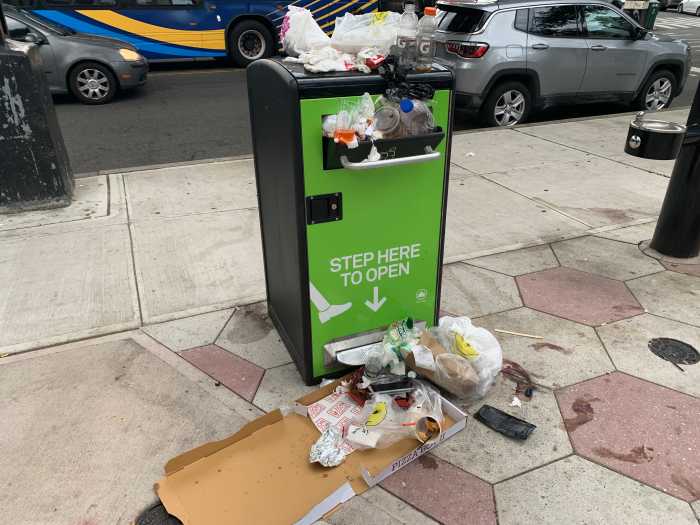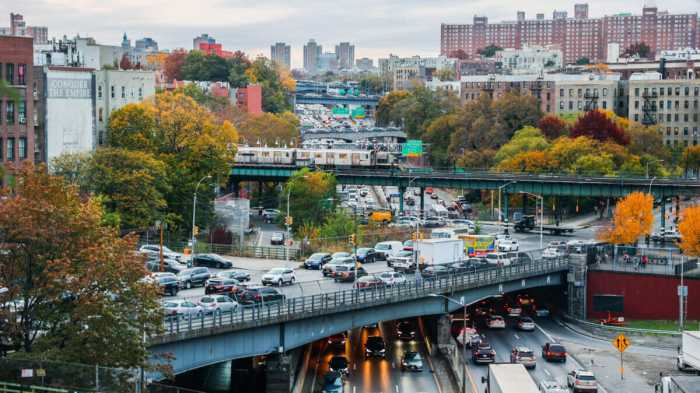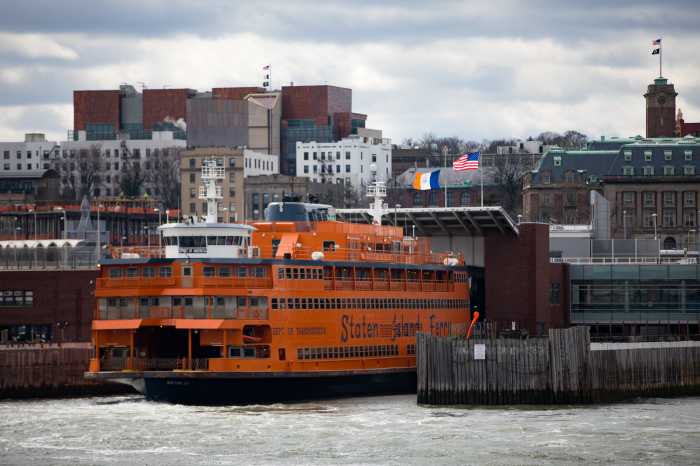
The physical separation of cyclists and pedestrians will be crucial in solving the congestion of the Brooklyn Bridge, according to the city’s Department of Transportation commissioner.
A day after announcing a new study to look into expanding the notoriously congested Brooklyn Bridge promenade, Commissioner Polly Trottenberg visited WNYC’s Brian Lehrer Show to discuss the challenges.
When asked if expanding the promenade would just draw more pedestrians and cyclists without solving the problem, Trottenberg said the additional space would finally give the city room to physically separate the two users.
“I think, clearly, if there is way that we can create extra space that will benefit pedestrians and cyclists, it may draw more of both, but if we can segregate them it will make the experience much safer for both,” Trottenberg said. “So that would be the goal.”
During the segment, callers pitched installing barriers in the promenade’s current configuration and banning cyclists from the Brooklyn Bridge entirely to funnel them onto the nearby Manhattan Bridge.
“I know there is sort of this frustration … that people do feel like there are too many uses crowded onto the bridge,” Trottenberg said. “People may have their own opinions on who we should kick off, but I think we’d rather try and find a solution where we can create more space to accommodate everybody.”
After recently completing a lengthy rehabilitation of the Brooklyn Bridge, and as Citi Bike expands in Brooklyn, Trottenberg said the time was right for the city to more seriously explore widening the promenade.
She noted that across the city, as cycling trips rise, her agency, as well as the Port Authority and MTA, are facing new calls for accessibility on bridges like the Verrazano-Narrows and George Washington.
“But, clearly, as cycling grows in this city, there is a real hunger to make those bridges more accessible,” she said.







































